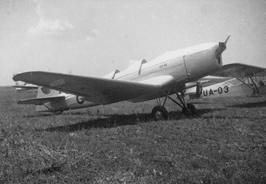 |
C-1 Klemm Kl 35 D was mass-built for the Luftwaffe at the Otrokovice plant SE Moravia from March 1939 to May 1945. The type was of mixed construction powered by a 100 Thoma engine of German origin.Kl 35 D was in use only for several months after ending hostilities in the Olomouc Military Training School commanded by General Joseph Duda.
NOTE : He was in charge also for the Prostejov and Stichovice Flying Training Units. |
| |
|
D-58 Fockewulf 58. The only machine of this type got aloft in the post-war Czechoslovakia, in particular early 50s.Entering service in 1934 it had been used by the Luftwaffe thoughout the WW II for pilot training and liasion duties. Two-seat lower-wing-strut-monoplane of the span of 21 m and length 14.10 m, top speed 255 km.p.h., range 670 km and service ceiling of 5 200 m. Powered by two Argus As 10C engines of 240 hp each. Steel-tube-welded fuselage covered by plywood, dural metal plates and fabric.Wings wood-as well as steel-framed and covered by plywood.
. |
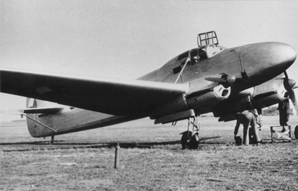 |
| |
|
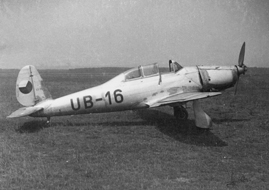 |
C-2 Production Arado Ar 96 Bs were being built in the Avia Letnany Comp.even in 1949. Used in the Czechoslovak Army Training Schools for advanced flying, observer training, as well as bombing and gunnery practice till the year of 1952. Span 10.96 m, length 9.13 m, empty weight of 1 295 kg. Powered by an 465 hp Argus As 410 A engine this type reached the maximum speed of 350 km.p.h., service ceiling 7 100 m and range 685 km. A two-blade propeller either wooden or composite being articulated only on ground. Alclad steel-framed wings, fuselage and tailplane, fabric-covered steel-framed elevator and rudder. Sheet metal plate cowling. Undercarriage retractable, tailwheel fixed.Armed by one 7.92 mm-cal synchronized machine gun. |
| |
|
C-4 Buecker Bue 131 Ds. Being built in the Vysocany Aero Company also after WWII, this type was used as in elementary as service flying training. The first batch of 20 machines was equipped by the original German Hirth 504 engine. C-4s entered service in the Military Air Academy first used not only for the training mentioned above, but also for aerobatics one. Steel-tube-welded fuselage fabric-skinned except cowling. Wood-framed wings as well as steel-framed taliplane, fin, rudder and elevator covered by fabric.
.A shot of No.16 production C4.
|
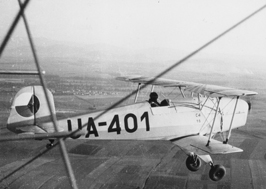 |
| |
| C-104 Buecker Bu 131 trainers of German origin were turned out on the territory of the Protectorate Bohemia and Moravia after March 15, 1939. Popular not only in military pilots and ones of the Svazarm Flying Clubs, C-104s were flown by all the Czechoslovak aerobats in the 50s. Span 7.40 m, length 6. 76 m, empty weight 390 kg. A 105 Walter Minor powerplant driving a wooden two-blade propeller. Top speed 185 km.p.h., service ceiling 4 300 m, range 650 km. Fixed undercarriage. The front-rear dual control two seater. |
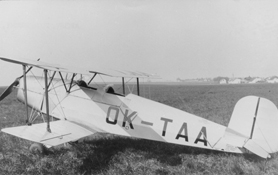 |
| |
|
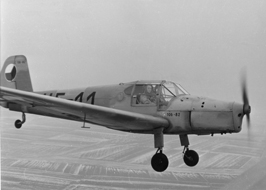 |
C-106 Buecker Bu 181. this two-seat training plane of German origin was turned out at the town of Otrokovice in three versions being different only in its powerplant. C-106s were used by the Czechoslovak Air Force in the Elementary Flying Training Schools and later by the Svazarm Civil Flying Clubs for all-age enthusiasts.Maximum speed of 196 km.p.h.,range 960 km. Span 10.60 m, length 7.85 m, empty weight 495 kg. Wood-framed wing covered by plywood and fabric, wooden frame od fin and tailplane covered by plywood,steel-framed control surfaces by fabric.Steel-tube-welded front part of the fuselage, the rear was wooden. Two-blade wooden propeller, undercarriage fixed. |
| |






